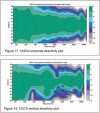Why not go and listen ?
Guy's I find this forum interesting . The debate here is what is the better dome . Get the best ATC dome and see what happens. Go and listen to a set of scm300a and tell yourself its midrange is distorting more than a KH420a at any reasonable level. I suspect the mid that is required to keep up with two 15's may win.
Unfortunately, individual listening reports are near useless for determining which is actually the better mid. Comparison would really need to be done blind, level matched, and with multiple people. Also, level matching the Neumann and ATC to assess mid quality will be tricky, as ATC seem to purposely play their mid a few dB louder than the other drivers.
In a well setup blind test with a large enough sample size, I would expect the Neumann to win comfortably. No doubt a few would still like the ATC, but based on the best audio science we know today, most people will pick the Neumann in a blind test.
In a sighted test, I would actually favor the ATC. Both are excellent drivers, and overall differences will be small. The increased mid volume and expectation bias in favor of the ATC, I would expect most to pick the ATC. We hear with our brains, not our ears, and brain state differences will likely swamp any actual distortion differences.
Would be great to see more people sharing what speaker's they use under their profile please.I had mine up the day I joined rather than my ugly head
I agree. It helps to contextualize others opinions, and I'm a fan of that. I used to list the speakers I own in my signature for that reason. I've removed it recently, but for different reasons.


